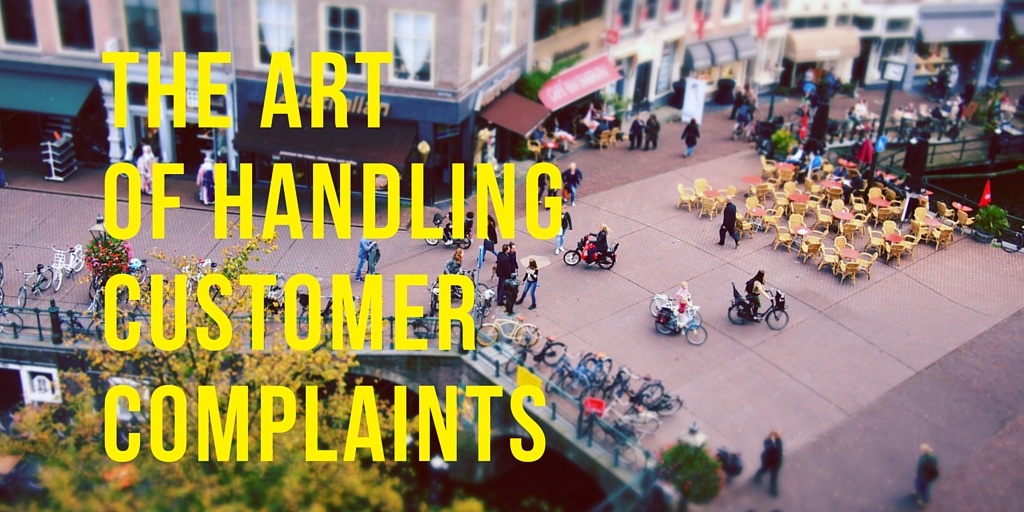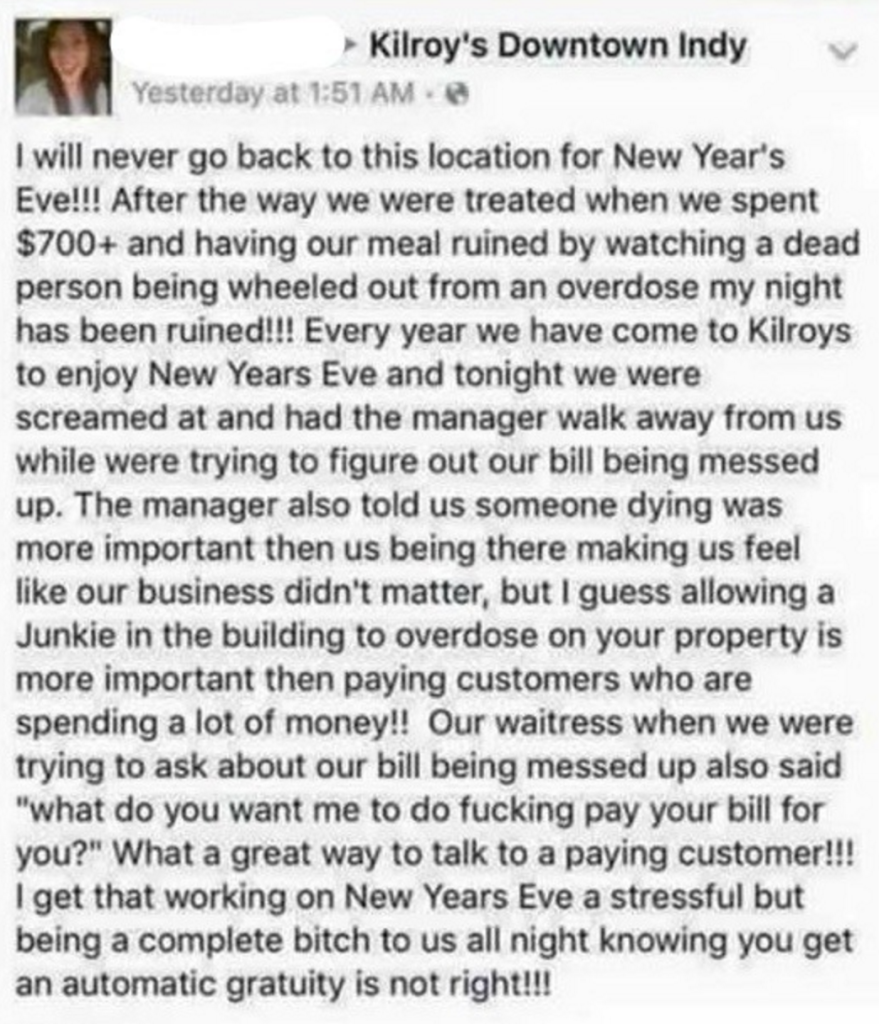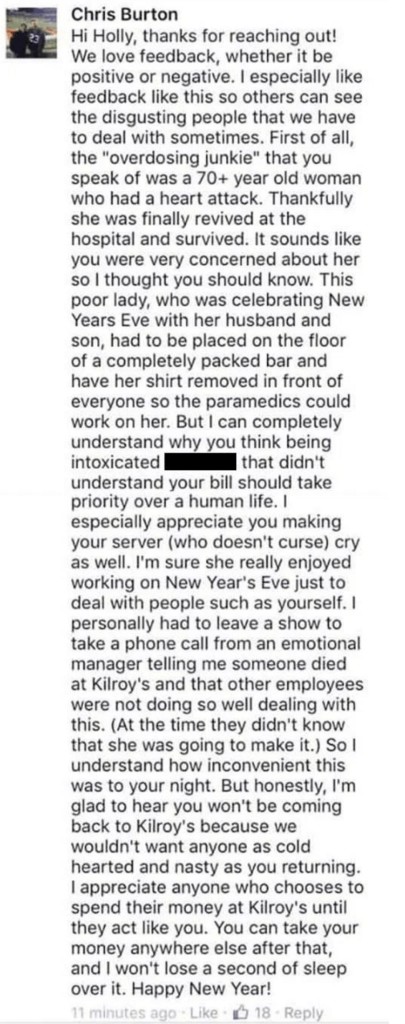The Art of Handling Customer Complaints

If you’re in the hospitality industry, you probably have heard the story of the young woman in Indianapolis that wrote a completely “off-base” rant on how her New Year’s Eve night was ruined at the restaurant, Kilroy’s. If you haven’t heard or read about it, here’s a brief run down of what happened.
A woman, named Holly, left a “restaurant review” of her experience on New Year’s Eve at Kilroy’s in Indianapolis. It was on the restaurant’s Facebook page and went something like this:

If you take this “review” for face value, it sounds like Kilroy’s is somewhere I wouldn’t like to visit. However the true art of handling a customer complaint came in the response by the manager. Chris Burton, Kilroy’s manager, replied with the following:

As much fun as it is to be on the sideline and see this whole thing go down, there are a few key lessons that we can take away from this situation. Here are some key learnings on how to artfully handle customer complaints:
1. REMAIN HUMAN: Unfortunately, in the hospitality industry, there WILL be times when you’re working with someone that is not acting rational. In the response, Chris handled this exactly as if he would have said it to Holly’s face. Although, the internet has emboldened consumers to write at their whim and complain or troll without any thought of repercussion, Chris took the high road, with some pricks here and there, to make his point and clear the air. He handled it as a human. We have to remember that public shaming on the internet is too easy. When you’re dealing with customer complaints, deal with it as calmly as you can, with respect. Sometimes even if they don’t give you any.
2. STAY ACTIVE ON SOCIAL MEDIA: If Holly’s first post to Kilroy’s FB page stood unanswered, that could have led to some people thinking that she was in the right. If you want to be where your customers are, you need to be active on social media. The word “active” will be different for every establishment, but at the very least, you’ll want to ensure you are monitoring you channels and what people are saying. This way, you can address any untruths or uncover insights from customer feedback.
3. NEVER STOP TRAINING: The best story I heard on the topic of training goes like this: There were two wood choppers that each had a large pile of wood to go through and at the end of the day a count of wood will be made. Wood Chopper 1 chopped all day long and worked his guts out to get through his pile. He observed Wood Chopper 2 and saw that he would cut for a little time, then go and sit down for a little time. This pattern for Wood Chopper 2 continued through out the whole day. At the end of the day, the count showed that Wood Chopper 2 was more productive than Wood Chopper 1. “WHAT?!” exclaimed Wood Chopper 1. “How were you more productive than I was when you would only chop for a moment and then sit down and rest?”, he said. Wood Chopper 2 replied, “Resting? I didn’t sit down to rest, I sat down to sharpen my axe!” Training will keep your staff sharp and it’s important to stop and take the time to train them.
At some point in our experiences, we’ve all dealt with difficult people. On the flip side, in our experiences, we’ve also may have felt to be treated erroneously. That said, let’s take the sum of our experiences and apply them to make the best experiences for our customers and clients. At the end of the day, it’s the level of service provided is what sets brands/restaurants/companies apart.

